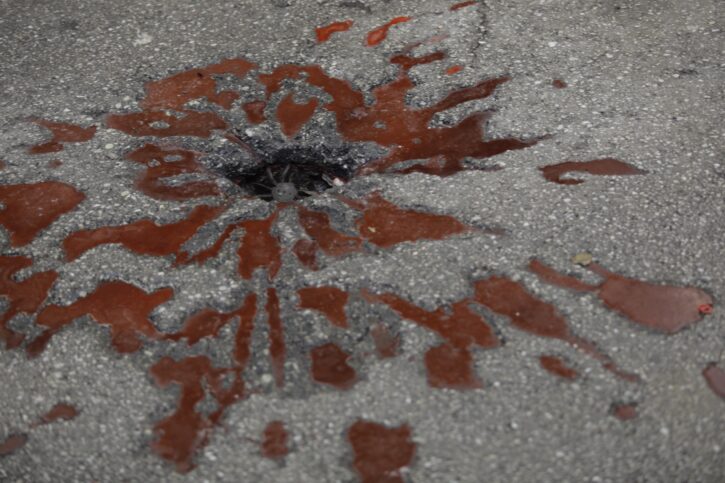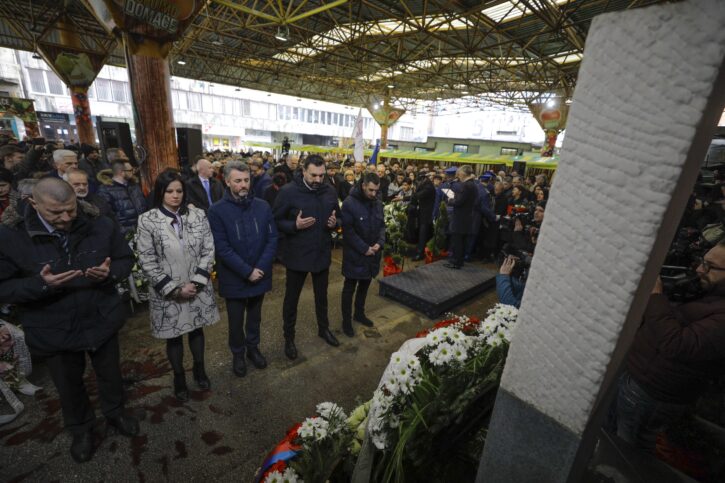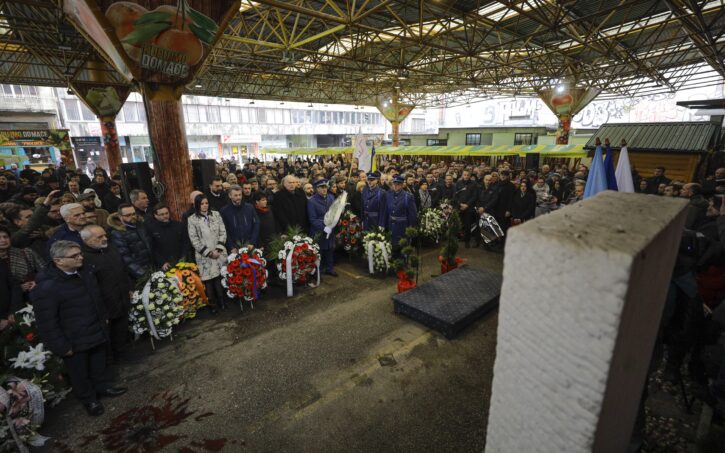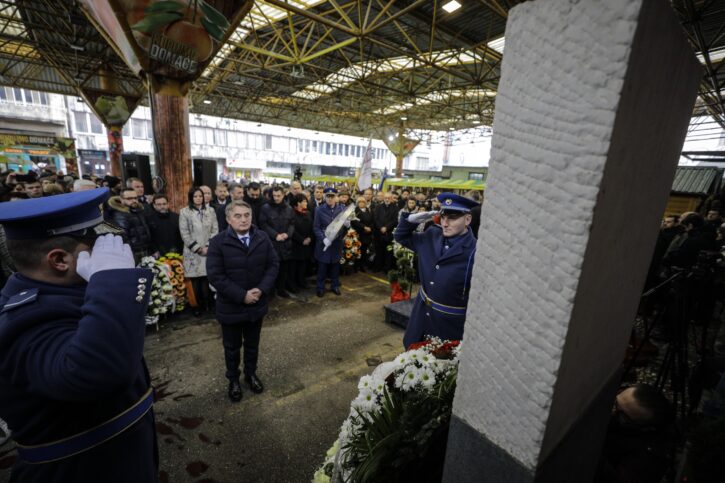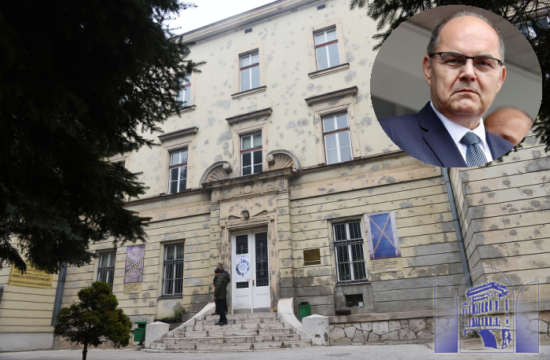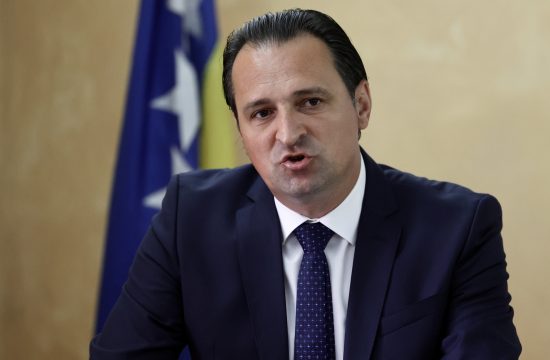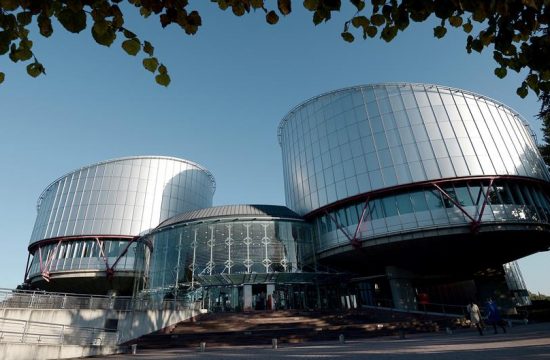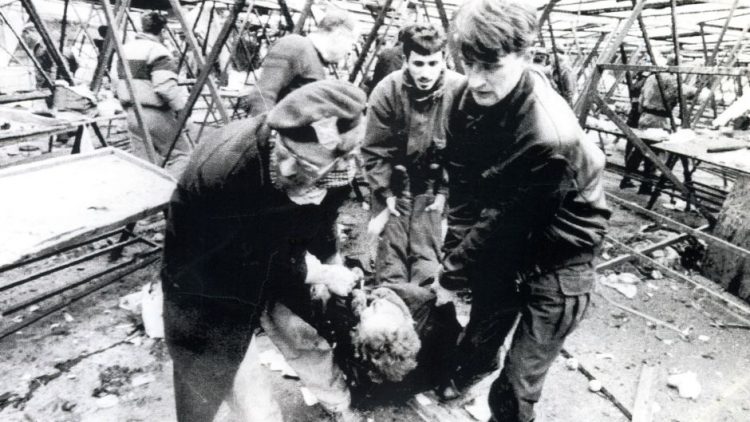
On Tuesday, Sarajevans gathered to lay wreaths and read out the names of the 68 civilians that died when on that date 25 years ago the Army of Republika Srpska fired a 120 mm shell on the busy Markale marketplace which resulted in one of the two biggest massacres in occupied Sarajevo.
The shell struck the marketplace in Sarajevo’s centre little after noon on February 5, 1994.
Apart from killing the 68 civilians, it injured another 144.
On this date, Sarajevans remember all the victims of the occupation of the capital between 1992 and 1995.
The shell that gave Sarajevo’s wartime victims their annual date was fired from the Mrkovici village between 12:10 pm and 12:20 pm. Numerous citizens and UN rescue workers and personnel immediately rushed to help the victims.
Markale was the busiest marketplace in the city during the war, where Sarajevans would look for food at a time when there was barely any to be found. It was also a place where citizens exchanged information and met with friends.
Survivors of the massacre, family members, neighbours, friends and numerous others joined in prayer at Markale on Tuesday, paying their respects to the victims and laying down flowers.
One of those who remembers the massacre well is Rafet Skenderovic, who visited the marketplace with friends when the tragedy struck.
He told the Anadolu Agency that he dreams of that day often but rarely visits Markale because it brings back memories of what he saw, as he was some 50 metres away from where the shell hit.
“I was going to drink coffee with Skrijelj and Subasic. They died, right next to me. I was standing there until I pulled myself together,” he said. “When I came to my senses, I started putting those who were injured into a car. I was not injured, thank God.”
“I dream of blood, wounded people, dead people,” he said, adding that he will only forget those scenes when he dies.
Hasan Banda was also there, and he suffered grave injuries.
“After 25 years I still remember it as if it happened today. I was gravely injured that day. All the tables were turned over. I saw (blown off) feet, heads (…),” he began describing.
Kadrija Hrkic lost his sister in the tragedy.
“We spoke over the phone only a half an hour before the shell struck. Later I found out that she went to the marketplace to buy something for lunch,” he remembered, adding that even all these years later, “the wounds remain and they are here to stay.”
“I am sad today when I see how quickly we are forgetting it all,” he said.
The head of the Association of Civilian Victims of Sarajevo, Senida Karovic, reminded of what happened in Bosnia's capital during the war.
“The occupation of the city of Sarajevo is the longest one in modern history, and it lasted for 1,479 days. More than 50,000 citizens were wounded, 11,541 citizens were killed, and there were 1,601 children among them,” she said.
“The Markale marketplace is a symbol for remembering all of Sarajevo's citizens who were killed or wounded throughout the war and the occupation between 1992 and 1995,” she added.
State and city officials also came to pay their respects, including Sarajevo Canton Prime Minister Edin Forto and Bosnian Croat member of the country’s tripartite Presidency, Zeljko Komsic.
“Time is passing, but it does not hurt any less. All of us, at least the people who are gathered here today – which is a good part of Sarajevo’s citizens – remember where they were at the moment when this crime took place in Markale,” Komsic said.
“And all of us have our own stories regarding that moment. Those are surely stories of families who have lost their loved ones here, of those who were wounded and remained handicapped, the most difficult, most tragic stories,” he added.
Komsic took the opportunity to send a message to Sarajevans.
“Let's not forget this and let’s move on, as we have to because of future generations,” he said.

